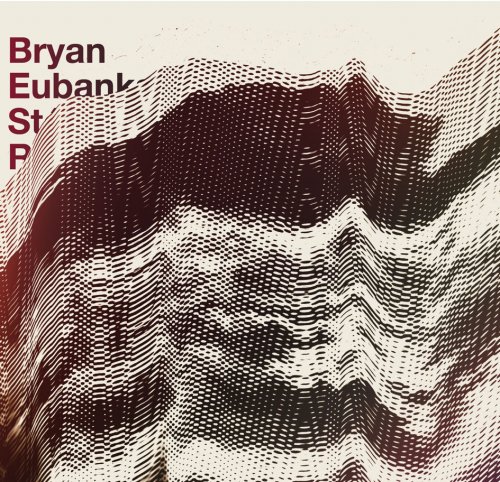Bryan Eubanks & Stéphane Rives - fq (2015)

Artist: Bryan Eubanks & Stéphane Rives
Title: fq
Year Of Release: 2015
Label: Potlatch
Genre: Experimental, Electronic, Abstract
Quality: FLAC (tracks)
Total Time: 30:30 min
Total Size: 124 MB
WebSite: Album Preview
Tracklist:Title: fq
Year Of Release: 2015
Label: Potlatch
Genre: Experimental, Electronic, Abstract
Quality: FLAC (tracks)
Total Time: 30:30 min
Total Size: 124 MB
WebSite: Album Preview
01. fq (30:30)
Although they have not previously recorded together, the pairing of Bryan Eubanks and Stéphane Rives makes perfect sense. French soprano saxophonist Rives is already a long-serving Potlatch veteran, with this being his fourth release on the label, following in the wake of his 2003 solo soprano album Fibres, the ground-breaking saxophone quartet Propagations (Potlatch, 2007) and his 2011 duo with the Paris-based Japanese percussionist Seijiro Murayama, Axiom for the Duration. As with the other saxophonists on Propagations, Rives has developed a personal, exploratory approach to his instrument, making him an ideal playing partner for Eubanks.
Crucially, although he is featured here on oscillators and feedback synthesiser, Oregon-born Eubanks is an experienced soprano saxophonist himself, as he demonstrated on Anamorphosis (Sacred Realism, 2014) with his fellow Berlin residents Johnny Chang and Catherine Lamb, and on Drums Saxophone Electronics (Intonema, 2014) with Jason Kahn (and also on the YouTube clip, below.) As on that album with Kahn, the minimal, lower-case titled fq effectively blurs the boundaries between electronic tones and real saxophone sounds; when the two overlap, they are often similar enough for one to blend into the other, a fact that Eubanks and Rives exploit to good effect here.
After they had played a couple of gigs together in Berlin, fq was studio-recorded there in September 2014. Although, the album's one track contains only just over half-an-hour of playing time, it is definitely well worth the price of admission. But it does raise the question of why recordings from those live gigs were not included on fq for comparison purposes.
The track that we do have begins with a single pure tone beneath which distant but incomprehensible voices can just be heard as well as breathy sax; gradually the tone modulates and pulses, becoming more complex, creating an effect akin to Morse code. If this were the opening to a movie, the audience would already be on the edges of their seats, drawn in and wanting to know more. The track has exactly the same effect, its opening promising much and creating the craving for more.
Although the piece does not have a plot per se, it contains as much drama, detail and mystery as any movie, being just as complex and satisfying. Altogether, the soundscape is impressively rich, deep and detailed, considering only two players were responsible for it. Across its duration, the track does not contain a dull moment or wasted phrase. Curiously, it seldom seems to last thirty minutes, sometimes seeming considerably longer, other times flashing by. Either way, it is extremely satisfying, handsomely repaying repeated listening.
Crucially, although he is featured here on oscillators and feedback synthesiser, Oregon-born Eubanks is an experienced soprano saxophonist himself, as he demonstrated on Anamorphosis (Sacred Realism, 2014) with his fellow Berlin residents Johnny Chang and Catherine Lamb, and on Drums Saxophone Electronics (Intonema, 2014) with Jason Kahn (and also on the YouTube clip, below.) As on that album with Kahn, the minimal, lower-case titled fq effectively blurs the boundaries between electronic tones and real saxophone sounds; when the two overlap, they are often similar enough for one to blend into the other, a fact that Eubanks and Rives exploit to good effect here.
After they had played a couple of gigs together in Berlin, fq was studio-recorded there in September 2014. Although, the album's one track contains only just over half-an-hour of playing time, it is definitely well worth the price of admission. But it does raise the question of why recordings from those live gigs were not included on fq for comparison purposes.
The track that we do have begins with a single pure tone beneath which distant but incomprehensible voices can just be heard as well as breathy sax; gradually the tone modulates and pulses, becoming more complex, creating an effect akin to Morse code. If this were the opening to a movie, the audience would already be on the edges of their seats, drawn in and wanting to know more. The track has exactly the same effect, its opening promising much and creating the craving for more.
Although the piece does not have a plot per se, it contains as much drama, detail and mystery as any movie, being just as complex and satisfying. Altogether, the soundscape is impressively rich, deep and detailed, considering only two players were responsible for it. Across its duration, the track does not contain a dull moment or wasted phrase. Curiously, it seldom seems to last thirty minutes, sometimes seeming considerably longer, other times flashing by. Either way, it is extremely satisfying, handsomely repaying repeated listening.

![Demo Rumudo - Second Nature (2025) [Hi-Res] Demo Rumudo - Second Nature (2025) [Hi-Res]](https://www.dibpic.com/uploads/posts/2025-12/1765883076_cover.jpg)






